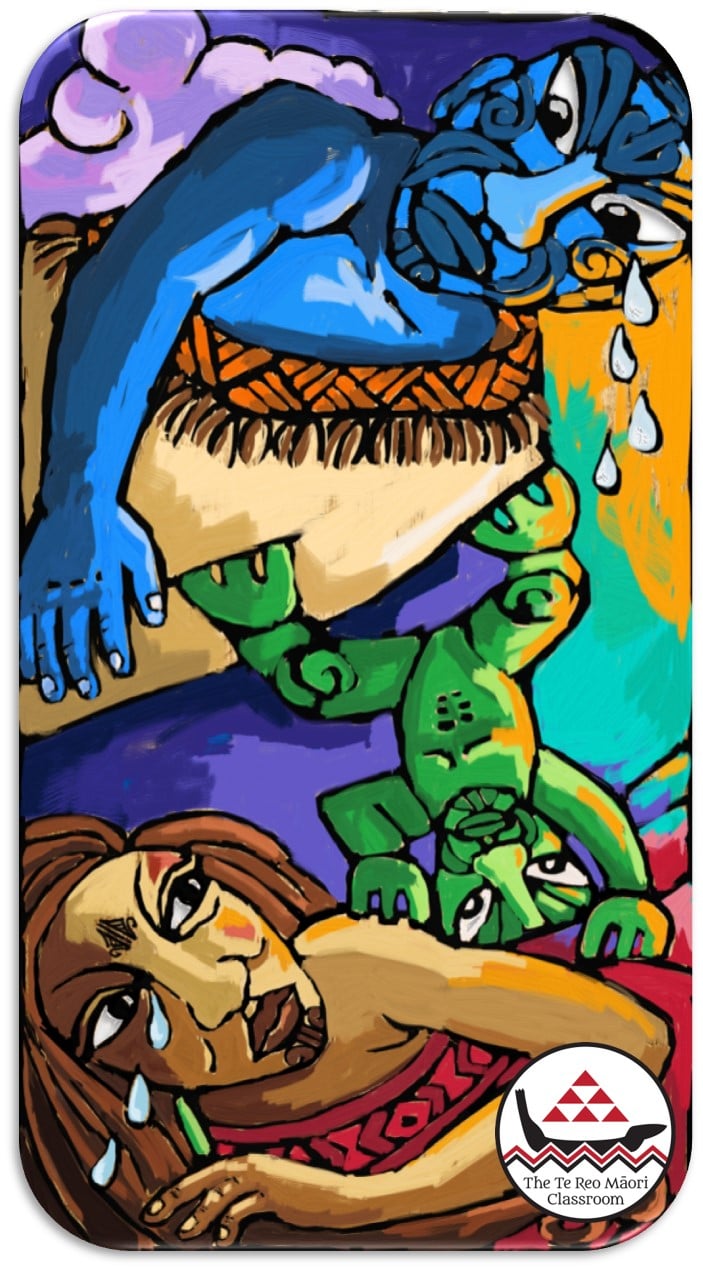Perhaps, it is safe to say that no other atua is more aspired and revered than Tāne. His relevance to us has remained throughout the generations and his character continues to inspire us in our daily lives. All the more, we need to pass on the stories of his unmatched persistence and his level-headed disposition.

The Origins of the God of the Forest
 In the Māori creation story, Tāne is one of the many offsprings of Papatūānuku (earth) and Ranginui (sky). In his frustration amidst living in the darkness, he led his siblings to push their parents apart. Eventually, they escaped the darkness and let the light into the world.
In the Māori creation story, Tāne is one of the many offsprings of Papatūānuku (earth) and Ranginui (sky). In his frustration amidst living in the darkness, he led his siblings to push their parents apart. Eventually, they escaped the darkness and let the light into the world.
As the trees stretch from the grounds to the clouds, we believe that the trees in the forest hold the earth and sky apart just like how Tāne held Papa and Rangi apart. Consequently, this makes the forest (ngahere) the realm of Tāne.
The Relevance of Tāne
Tāne is an indispensable character in the Māori culture because the ngahere is an essential source of food, shelter, and tools. He is the atua-god/guardian of mankind, birds, trees. In stories, we aspire to his level-headedness and persistence. His “big” job is to maintain the lush and diverse resources of the earth.
With these attributes, he became an example to many of us. His persistence and determination is unmatched, as it emanates in the narrative of how he pushed his parents apart. The story of his bravery and boldness inspires us, especially in the story of how he acquired the three baskets of knowledge in spite of all the challenges and obstacles. He inspires us to maintain harmonious relationships amidst differences in order to achieve a common goal; Tāne illustrated this in his cooperation with his brother Tāwhirimātea to defeat the insect-like demons even though they had their BIG differences (separation of their parents).
Even the largest tree in the whole of Aotearoa – Mahuta – is named after him. It is an outstanding symbol of strength and stature. Ultimately, he is the atua that we aspire to be like.
Tāne in Iwi Traditions
Tāne is a figure of great importance in iwi traditions. First, he separated earth and sky and brought this world into being. Also, he fashioned the first human. Furthermore, he adorned the heavens, and brought the baskets of knowledge, wisdom, and understanding down from the sky to human beings.
When the ancestors of Māori arrived in New Zealand, they found it was very different from their Polynesia. They had been primarily seafaring people. However, on these larger, colder islands, they also needed to know about the bush and its inhabitants. Eventually, these experiences led to the realisation that understanding the forest was vital to life. As Māori explored and learned about the forests, Tāne, the god of the forest, found an important place in tribal consciousness and traditions. Therefore, people developed a reverence for and knowledge of Te Waonui-a-Tāne – the great forest of Tāne.
The Many Names of Tāne
In the Māori culture, Tāne has different names to reflect his different roles. He is Tāne-mahuta as god of the forest, Tāne-te-wānanga as the bringer of knowledge, and Tāne nui-a-rangi as bringer of higher consciousness. His various names suggest someone who can defeat adversaries, and who is true, loyal, and authentic.
If you are keen to find out about his many other names here is a scholarly article.

These are only a few of the numerous reasons why Tāne remains to be relevant in our times. It is only rightful that we tell our learners stories to to inspire them to be like him. As young as they are, our learners can start aspiring to be brave, humble, and cooperative, just like the atua of the forests that guard us and the birds that hover over us.
Ko Aotearoa tēnei!
For more related resources:
Tāne and the Three Baskets of Knowledge

